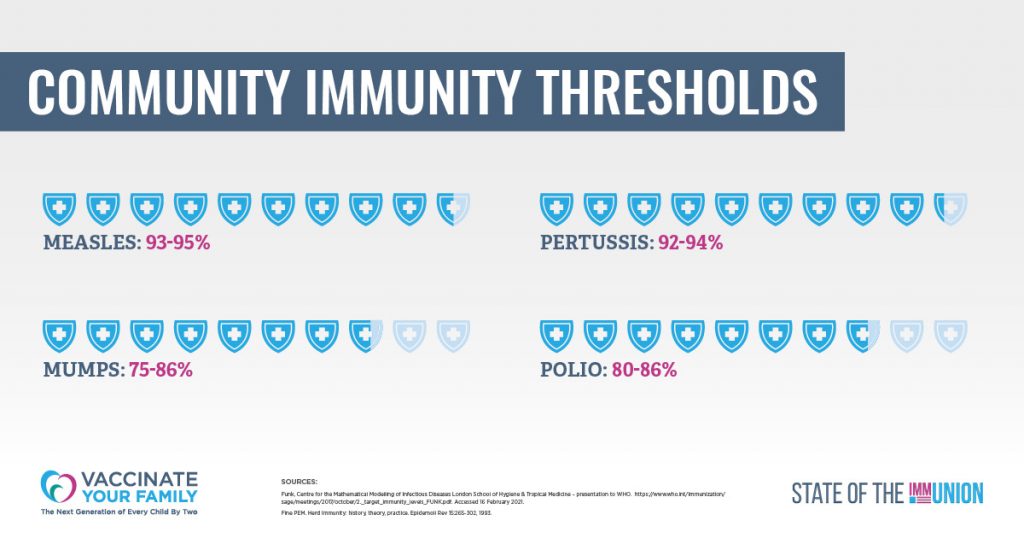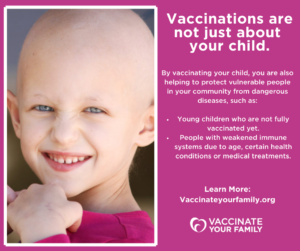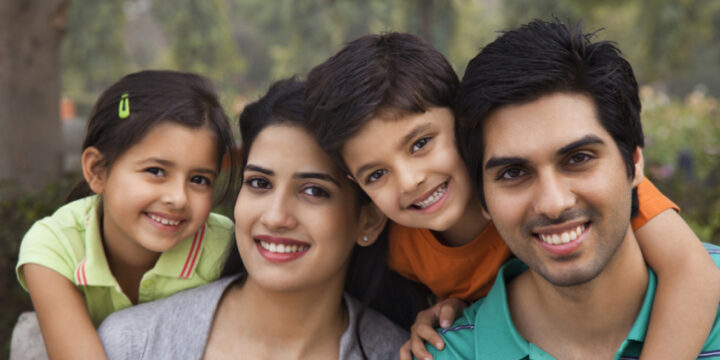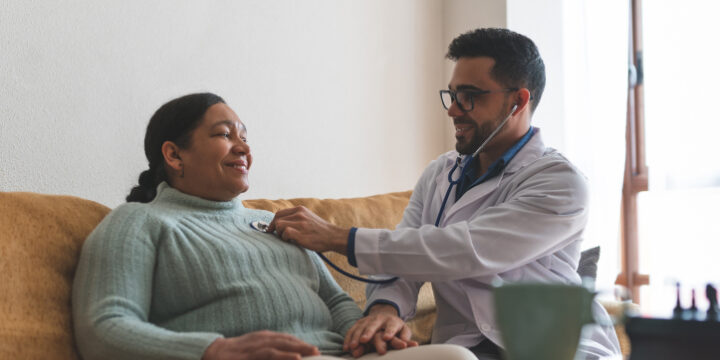What is Community Immunity?
Vaccines not only keep individuals healthy, they also help keep communities healthy.
Diseases can travel quickly through a community and make a lot of people sick. However, when enough people are vaccinated against a certain disease, the germs can’t travel as easily from person to person, and the entire community is less likely to get the disease. This is known as “community immunity or “herd immunity”.
The percentage of people who need to have protection through natural immunity or vaccination in order to achieve community immunity varies by disease. See the graphic below:
The levels of vaccination rates needed to protect communities from diseases vary based on several factors, including how infectious each diseases is and how well the vaccine works. As a society, it is important to work together to protect one another from deadly diseases. The more people who are vaccinated, the fewer opportunities a disease has to spread. By maintaining high vaccination rates we not only protect ourselves, but we also protect vulnerable infants who are not fully vaccinated yet and people of all ages with weakened or failing immune systems.
Many infectious diseases are no longer as common in the U.S. as they once were, but in today’s interconnected world, diseases are often just a plane ride away. If we stopped vaccinating, the limited number of vaccine-preventable disease cases we have in the United States could very quickly become tens or hundreds of thousands of cases.
Learn more about outbreaks and the vaccine-preventable diseases that still occur throughout the U.S.
Learn more about community immunity by checking out the the FRED Measles Epidemic Simulator, developed by the University of Pittsburgh and Carnegie Mellon University. It shows how measles spreads when only 80% of the community is vaccinated against the disease (too low to benefit from herd immunity) vs. when 95% of the community is vaccinated (high enough to benefit from herd immunity).
Vaccinated Yet Vulnerable
While vaccines are very effective at preventing disease, no medication is 100% effective. Fortunately, most people who get vaccinated do get full protection from disease. However, a very small percentage of people who are vaccinated may not get full immunity from the vaccine and may still be vulnerable if exposed to disease.
Just as you count on others not to knowingly expose you to dangerous illnesses, they rely on you. We must each do our parts to limit everyone’s exposure to diseases. That means the whole family needs to get vaccinated according to the CDC’s recommended immunization schedules.
You Can’t Hide Behind the Herd
Most vaccine-preventable diseases are spread from person to person. If one person in a community gets an infectious disease, he or she can spread it to others who are not immune. But a person who is immune to a disease because of vaccination can’t get that disease and can’t spread it to others.
People who aren’t vaccinated, not only put themselves at risk from disease, but they also increase the risk of disease for others.
Some people mistakenly believe that they do not need to vaccinate their family members because so many other people have had their immunizations. But hundreds of thousands of people don’t have full immunity (e.g., young babies who are not fully vaccinated, people undergoing chemotherapy for cancer, people with HIV, children on steroids for asthma, and others.) Since the bacteria and viruses that cause these diseases still exist throughout the world, only by working together can we keep diseases away, and help keep our families and communities healthy.




